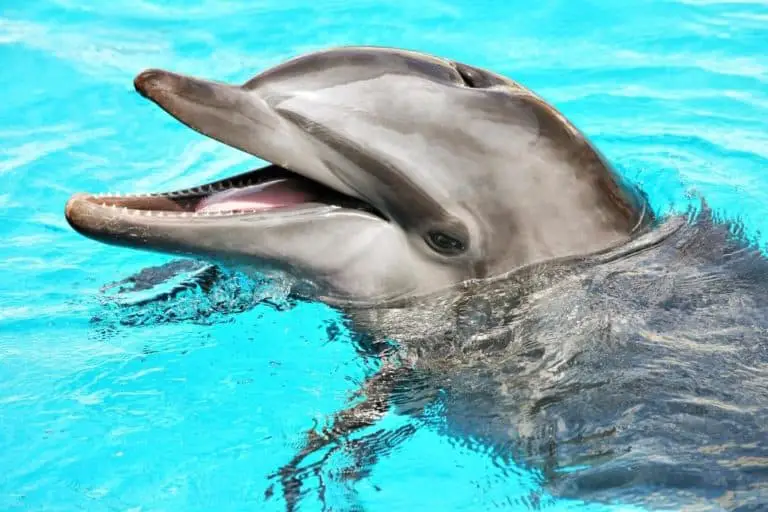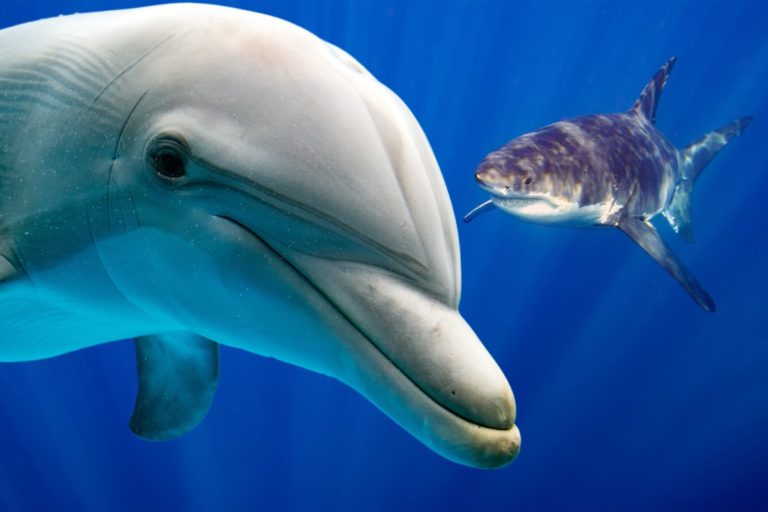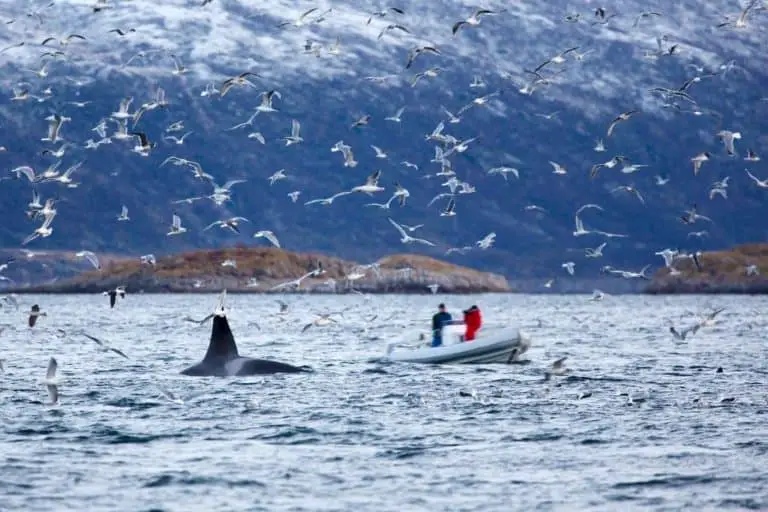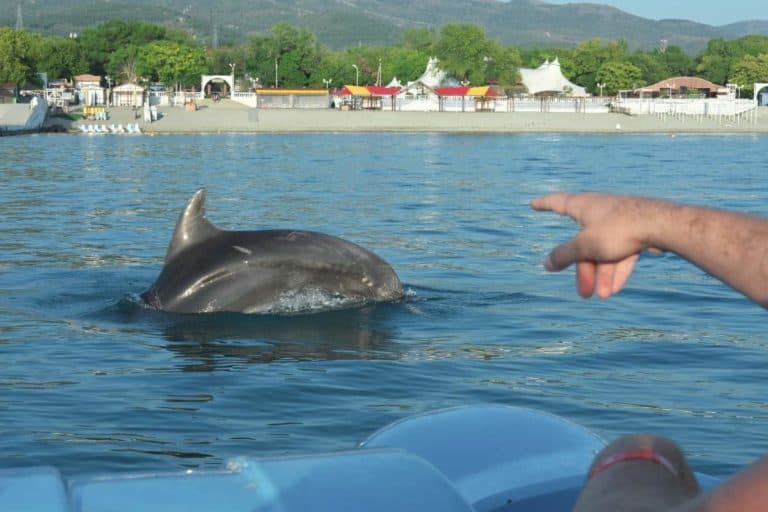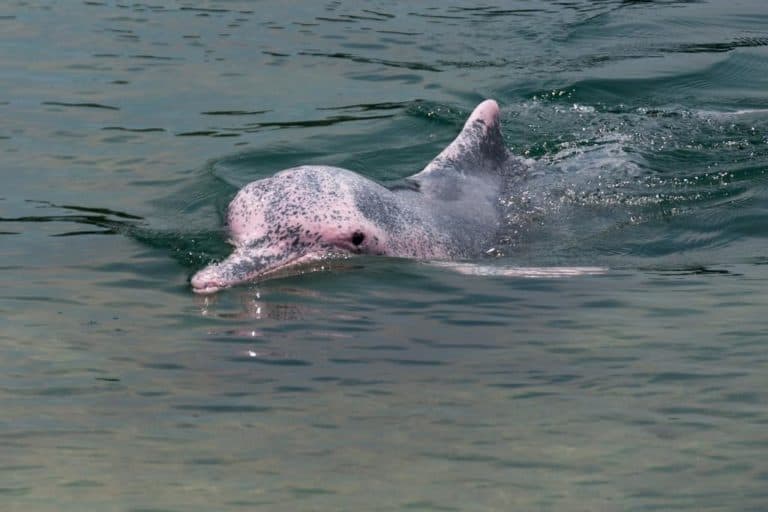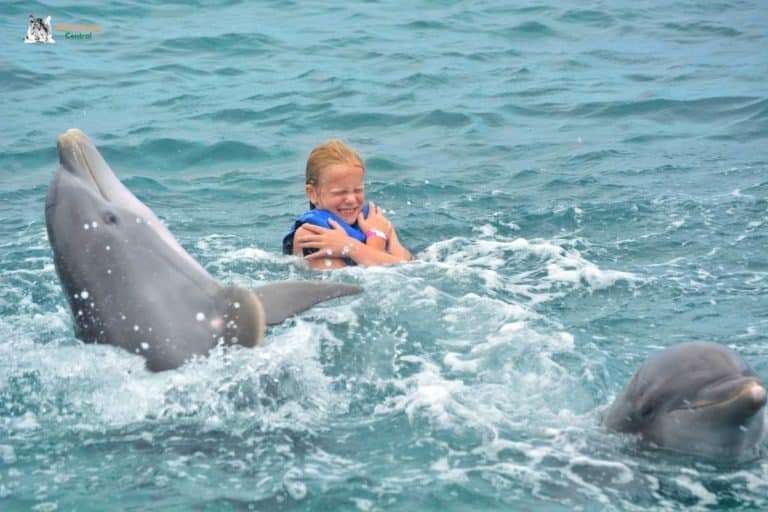Do Dolphins Travel in Pods? Here’s the Answer
Yes, dolphins travel in pods. Pods are made up of both males and females and include animals of all ages. Dolphin pods are led by a dominant male dolphin, usually the oldest and most experienced pod member.
Dolphins communicate with each other using a variety of vocalizations, including clicks, whistles, and burst pulses.
They use these vocalizations to coordinate their swimming movements and communicate important information about food sources, predators, or other dolphins in the area.
What is the name of a group of dolphins?
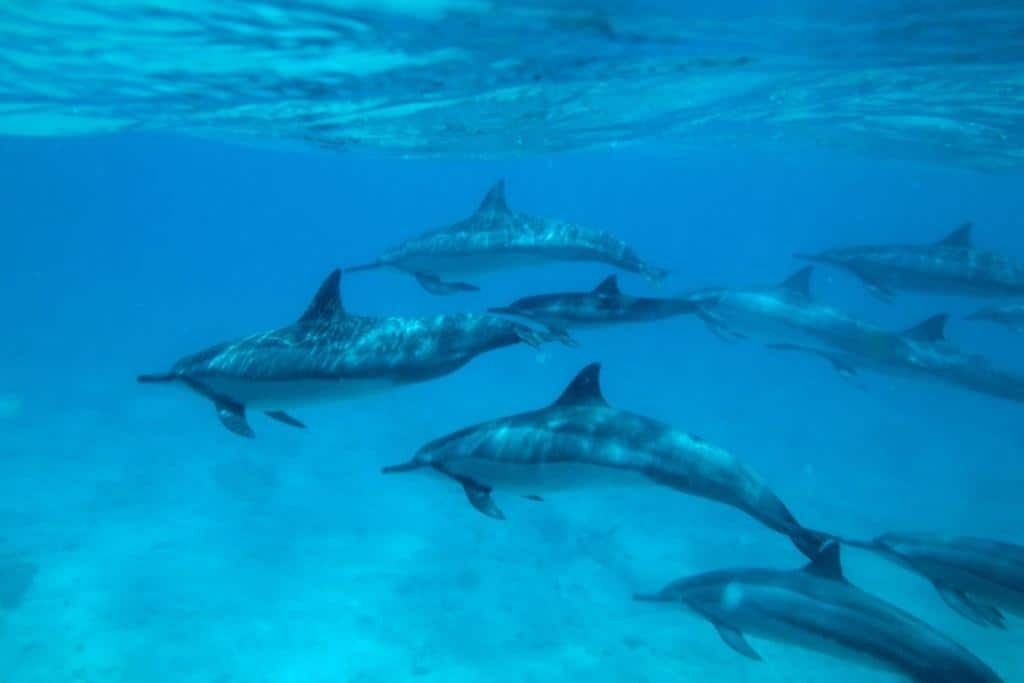
A group of dolphins is known as a pod. Dolphins are highly social creatures and often travel in groups to find food and protect themselves from predators.
Pod size can vary depending on the dolphin species, but they typically range from just a few individuals up to 30.
Although each pod has its unique structure and social hierarchy, all group members work together to ensure the survival of the entire pod.
What is a pod?
A pod is a group of animals of the same species that live and work together. Pods can be found in many different animal groups, including mammals, birds, fish, and invertebrates.
Some examples of mammal pods include deer herds, elephant families, and whale pods. Birds often form flocks, which can be considered a type of pod.
- Fish pods are typically made up of smaller fish that swarm together for protection from predators.
- Invertebrate pods are often composed of insects that live in colonies, such as ants and termites.
While each type of pod is unique, they all share one common trait: the ability to cooperate with other group members to survive and thrive.
Dolphin Pod Structure
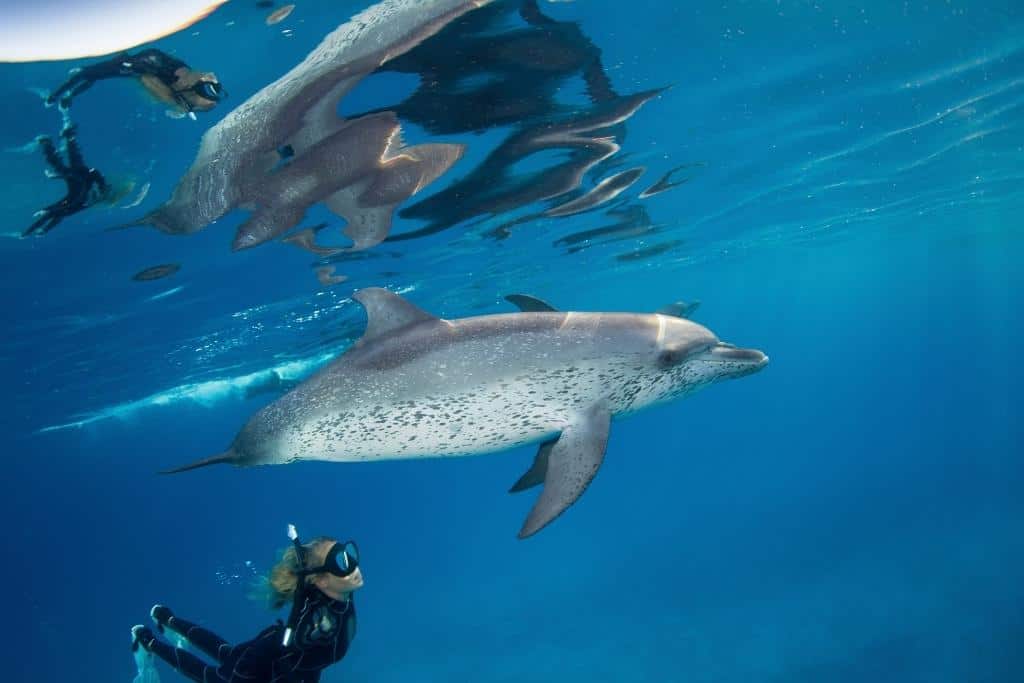
Dolphins have highly developed relationships within a pod, cooperating in tasks such as hunting and raising young. Calves usually stay with their mothers for several years before becoming more independent.
Although pods typically consist of related individuals, such as mothers and their offspring or sisters, dolphins are not afraid to mix things up occasionally, with individuals often moving between pods.
This social flexibility is thought to be one of the key reasons why dolphins have been so successful as a species.
It is thought that dolphins within a pod share a standard vocal dialect, which helps them to communicate and stay together. Each pod has a unique whistle, which acts like a name and allows other dolphins to identify them.
Pods can range from just a few dolphins to over 100 individuals. Pods often join together when foraging for food or traveling long distances to form a superpod.
Superpods can be made up of thousands of dolphins and spread over several miles.
Dolphin Pod Hierarchy
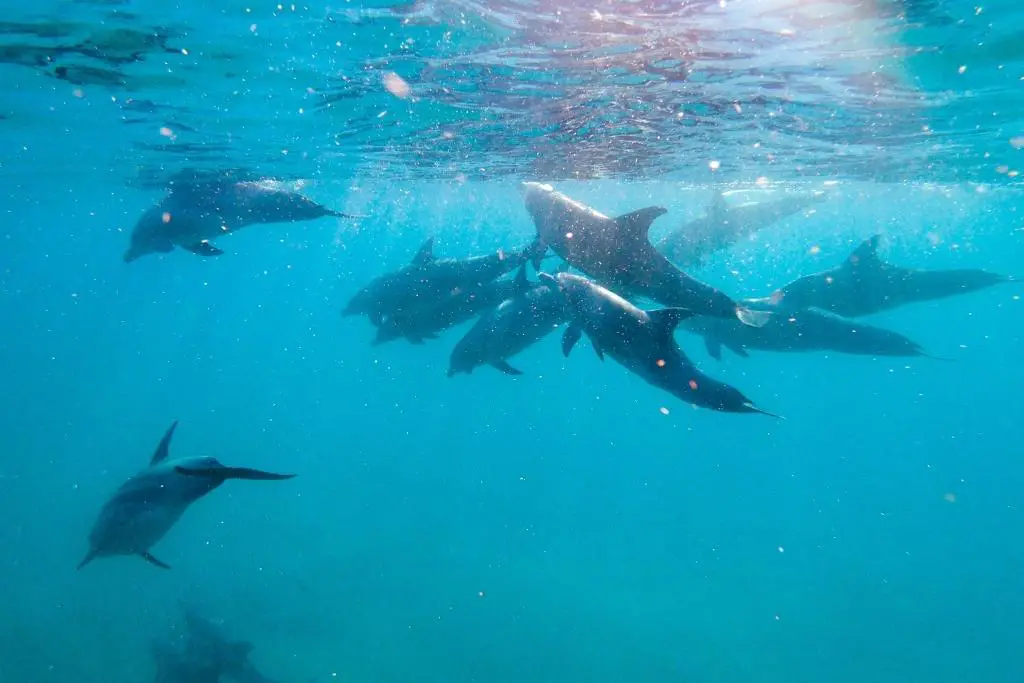
Dolphin pods are incredibly complex social structures, with a strict hierarchy that dictates everything from feeding to mating.
At the top of the hierarchy is the pod leader, a position that is usually held by the oldest and most experienced dolphin in the group. The leader is in charge of all major decisions, including where to go and when to take a break.
Underneath the leader is a few senior dolphins, who act as advisers and help to enforce the leader’s decisions.
Most dolphins in a pod are middle-ranked, primarily focusing on day-to-day activities such as foraging for food.
At the bottom of the hierarchy are the junior dolphins, typically younger and less experienced than their counterparts.
While junior dolphins may not have much say in pod decisions, they play an essential role in keeping the group together and helping to care for calves.
What are the benefits of traveling in pods for dolphins?
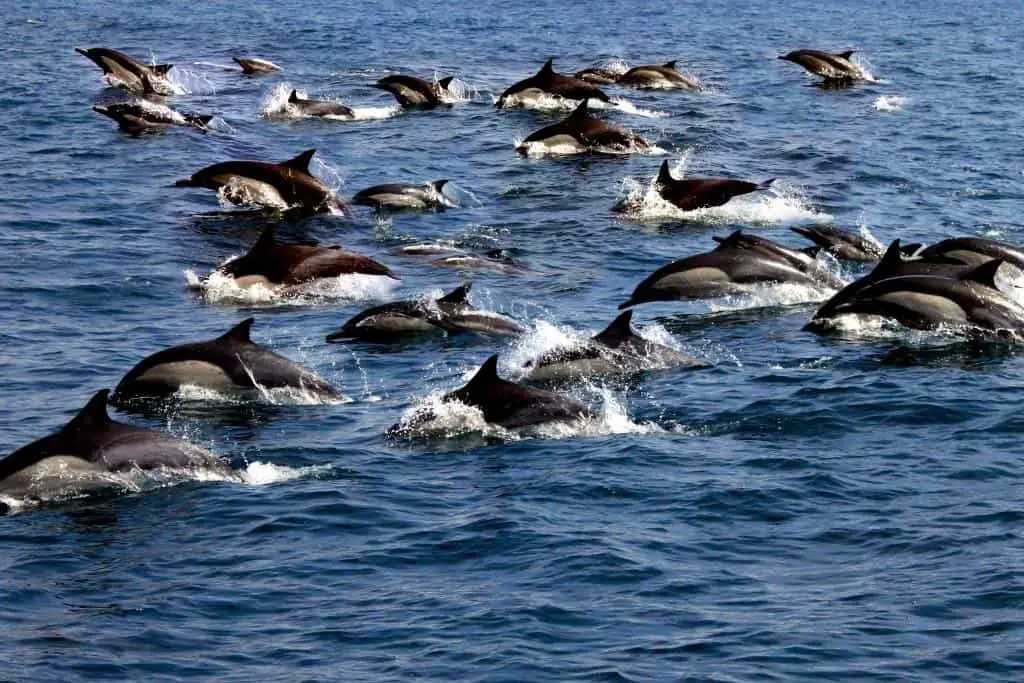
Traveling in groups provide many benefits for dolphins, including protection from predators, assistance in finding food, and opportunities for social interactions.
- Pods help to keep dolphins safe. There is safety in numbers, and by traveling in a group, dolphins can better defend themselves against sharks and other predators. Pods allow dolphins to share information about predator sightings and movements. This intelligence-gathering helps pods to avoid dangerous areas and stay safe.
- Traveling in pods makes it easier to find food. Using teamwork, dolphins can drive fish into tight groups that are easy to catch. This method is especially effective for hunting large prey items such as tuna or swordfish.
- Pods provide opportunities for social interactions. Dolphins form strong bonds with other pod members, and these social interactions help reduce stress and enhance cognitive functioning.
Does pod behavior change near humans or boats?
Dolphin pods are more cautious and alert when near humans or boats.
- They may move away from the area or stop their activities altogether.
- However, dolphins are also known to follow boats and jump out of the water.
While the reasons for this behavior are not fully understood, it is clear that dolphin pods exhibit various behaviors near humans or boats.
Can dolphins swim faster in a pod than they can on their own
There are few theories about dolphins swimming faster in a pod than they do on their own.
- One theory is that the dolphins take advantage of the wake created by the other pod members, using it to propel themselves forward.
- Another possibility is that the close proximity of other dolphins encourages them to swim faster to keep up with the group.
Whatever the case, it’s uncertain if dolphins swim faster in a group than alone.
Do dolphins stay in pods for life?
Yes, dolphins stay in pods for life. The pod provides dolphins with social and emotional support and protection from predators. Dolphins are highly social animals and depend on one another for survival.
How many dolphins are in a super pod?
There isn’t an exact answer to this question since dolphin pods can vary in size, but researchers have estimated that super pods can have more than 1,000 dolphins.
These vast groups are usually made up of smaller pods that have come together for a specific reason, such as feeding or socializing. Since dolphins are highly social creatures, it’s not surprising that they form such large pods.
Do all dolphins live in pods?
Yes, all dolphins live in pods. Even Orcas, which are actually dolphins, live in pods. These massive creatures live in pods that can have up to 30 members.
While all dolphins live in pods, not all of them travel in groups. Some dolphins, like Orcas, prefer to travel alone or in smaller groups. Other dolphins, like Bottlenose dolphins, commonly travel in large groups.
